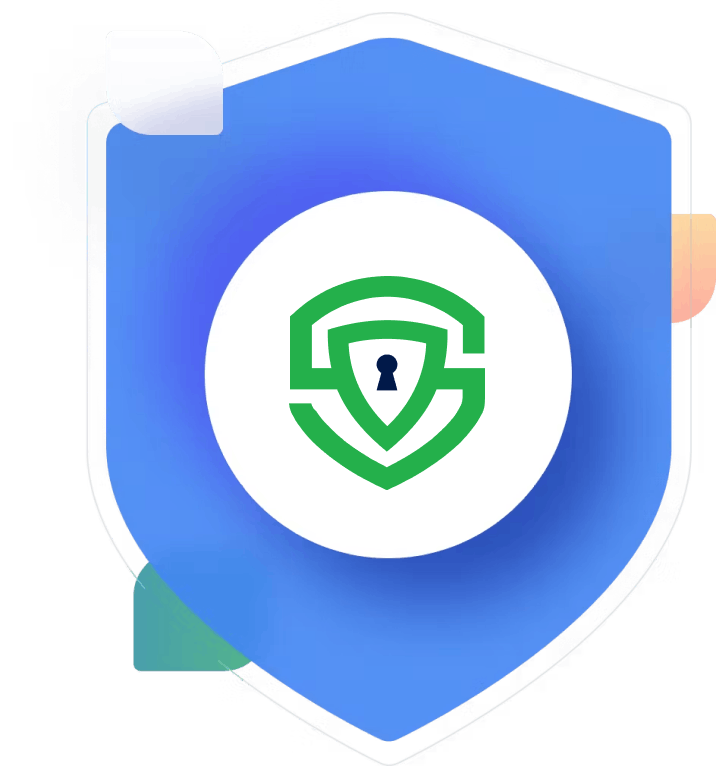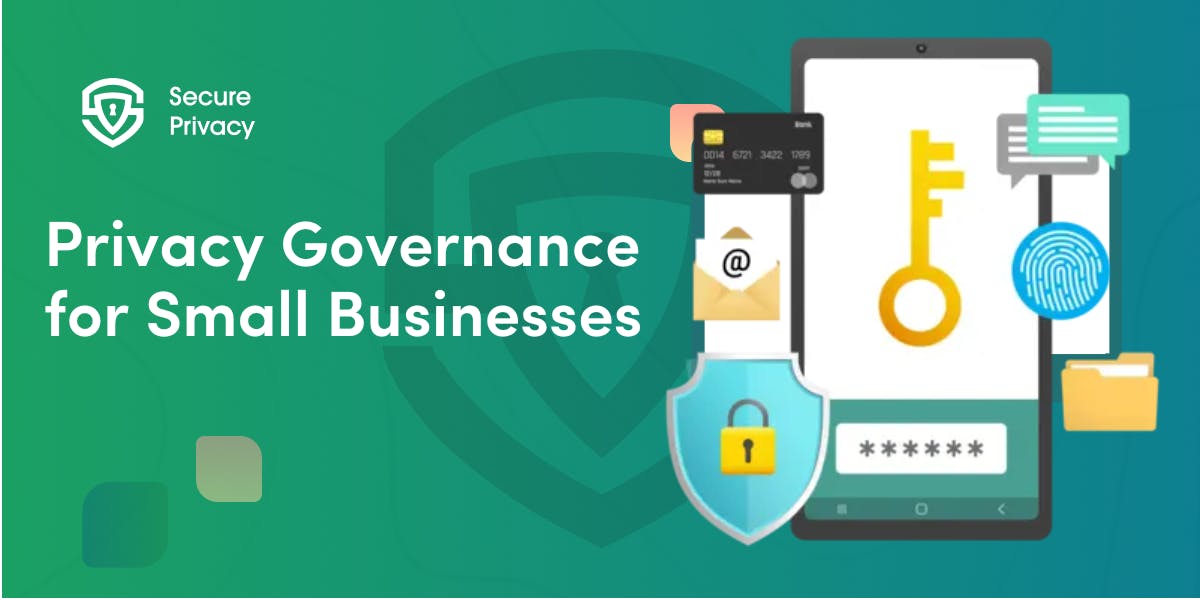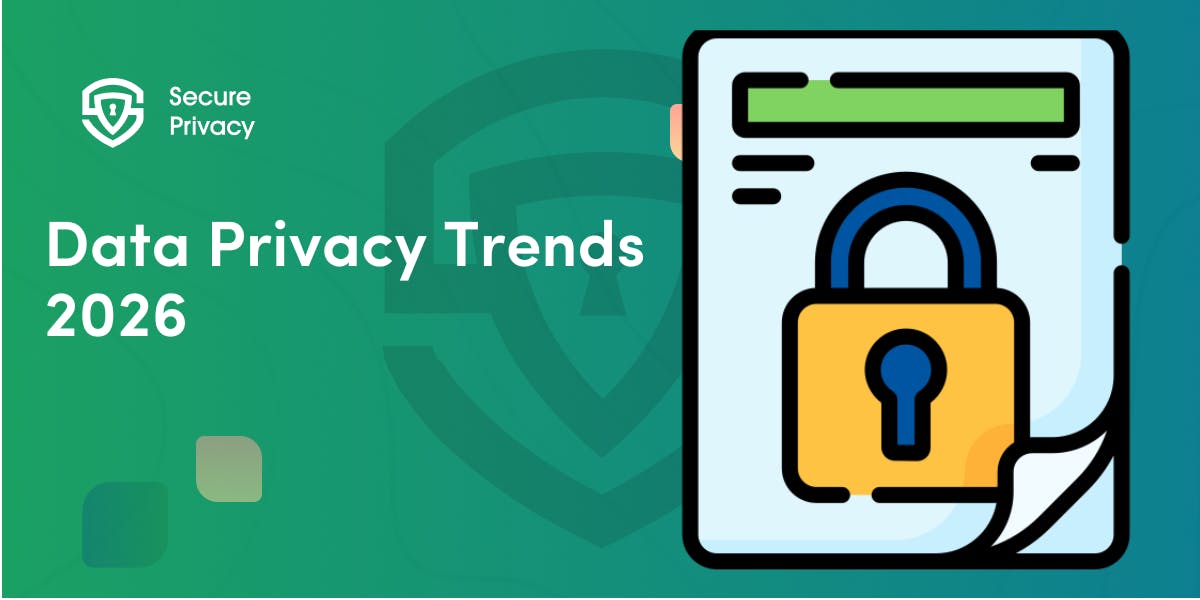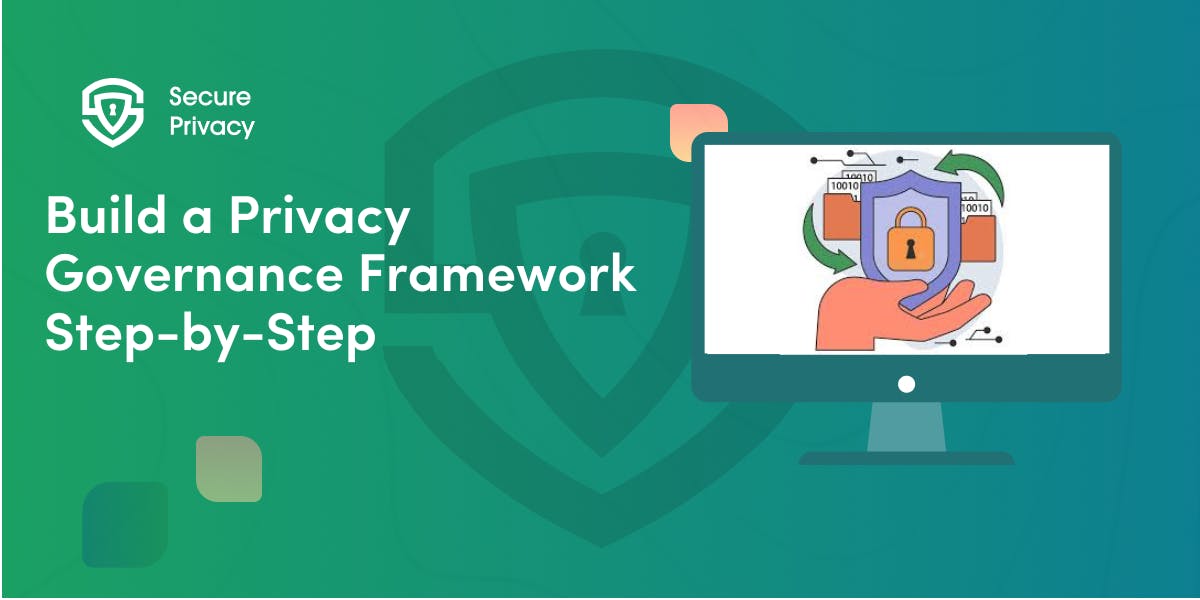SOC 2 Compliance: What It Is, Why It Matters, and How Secure Privacy Achieved It
Imagine your enterprise prospect just asked for your SOC 2 report. Your partner agreement requires proof of security controls. Your biggest opportunity this quarter hinges on demonstrating that your platform protects customer data to audited standards.
In today's privacy-conscious market, trust isn't built on promises — it's validated through independent certification. SOC 2 compliance has become the security benchmark that separates serious SaaS providers from those merely claiming to prioritize data protection.
This guide explains what SOC 2 certification actually means, why it matters for privacy and consent management platforms, and how Secure Privacy achieved SOC 2 Type II certification to deliver the highest level of assurance to customers handling sensitive consent data across global regulatory frameworks.

Prioritizing user privacy is essential. Secure Privacy's free Privacy by Design Checklist helps you integrate privacy considerations into your development and data management processes.
What Is SOC 2 Compliance?
SOC 2 (System and Organization Controls 2) is an auditing framework developed by the American Institute of Certified Public Accountants (AICPA) that evaluates how service organizations protect customer data. Unlike prescriptive standards that dictate specific security measures, SOC 2 is flexible — allowing organizations to design controls that fit their specific services while meeting rigorous criteria for data protection.
The framework centers on five Trust Services Criteria that define what secure, reliable service delivery looks like. Security is mandatory for all SOC 2 audits, while organizations select additional criteria based on their services and customer commitments.
The Five Trust Services Criteria:
Security (mandatory): Protects information and systems against unauthorized access, disclosure, or damage. Controls include access management, network security, encryption, and incident response procedures.
Availability: Ensures systems are operational and available to meet service commitments. Covers disaster recovery, performance monitoring, and system redundancy.
Processing Integrity: Validates that system processing is complete, valid, accurate, timely, and authorized. Includes quality assurance, data validation, and processing accuracy monitoring.
Confidentiality: Protects information designated as confidential, including trade secrets and proprietary business information. Focuses on access restrictions, data classification, and secure handling.
Privacy: Addresses collection, use, retention, disclosure, and disposal of personal information in accordance with privacy commitments and regulations. Requires clear privacy notices, consent mechanisms, and proper data lifecycle management.
Understanding SOC 1, SOC 2, and SOC 3 Differences
The AICPA offers three types of SOC reports designed for different audiences and purposes.
SOC 1 focuses on controls relevant to financial reporting. It's designed for service organizations whose systems affect their clients' financial statements—think payroll processors or claims administrators. SOC 1 reports help clients' auditors understand how service organization controls impact financial statement accuracy.
SOC 2 evaluates controls relevant to security, availability, processing integrity, confidentiality, and privacy. It's designed for technology service providers, SaaS companies, cloud hosting providers, and any organization handling customer data. SOC 2 reports provide detailed control descriptions and testing results for evaluating vendor security.
SOC 3 is a simplified, public version of a SOC 2 report. It contains the auditor's opinion but excludes detailed control descriptions and test results. Organizations can freely distribute SOC 3 reports without confidentiality restrictions, making them useful for marketing purposes, though they provide less assurance than full SOC 2 reports.
For privacy and consent management platforms like Secure Privacy, SOC 2 is the relevant framework because it addresses the security and privacy controls that matter most to customers entrusting us with their consent data and compliance infrastructure.
SOC 2 Type I vs Type II: Critical Distinctions
SOC 2 reports come in two types that represent fundamentally different levels of assurance.
SOC 2 Type I evaluates whether controls are suitably designed to meet Trust Services Criteria at a specific point in time. Think of it as a snapshot—the auditor examines your control design and confirms it should work if implemented correctly. Type I audits typically take 2-3 months and provide initial validation that your security approach is sound.
Type I reports serve organizations needing to demonstrate compliance quickly or those just beginning their SOC 2 journey. However, they offer limited assurance because they don't test whether controls actually function over time.
SOC 2 Type II examines both control design and operating effectiveness over a period of time, typically 3-12 months. The auditor doesn't just verify that controls exist — they test whether those controls consistently function as intended throughout the observation period.
Type II reports provide substantially greater assurance and are strongly preferred by enterprise customers and security-conscious buyers. They demonstrate sustained commitment to security rather than momentary compliance. The extended timeline means Type II audits typically require 6-12 months from start to report delivery.
Secure Privacy pursued SOC 2 Type II certification specifically because our customers need confidence that consent data protection operates consistently over time, not just during a one-time assessment.
Why SOC 2 Matters for Privacy and SaaS Companies
For companies handling sensitive customer data, SOC 2 certification delivers benefits far beyond checking a compliance box.
Customer Trust and Confidence: Enterprise buyers routinely require SOC 2 reports during vendor evaluations. Without certification, sales cycles extend dramatically or opportunities close entirely. SOC 2 provides the third-party validation that procurement teams need to approve vendor relationships without extensive custom security assessments.
Competitive Differentiation: In crowded markets, SOC 2 certification signals operational maturity and data protection commitment. It demonstrates that you've invested in proper controls, documentation, and independent validation—separating serious providers from those treating security as an afterthought.
Regulatory Alignment: While SOC 2 isn't itself a privacy regulation, it aligns closely with GDPR, CCPA, and other privacy frameworks that require appropriate technical and organizational measures for data protection. Organizations with strong SOC 2 controls typically find privacy compliance easier because foundational security practices are already established.
Risk Mitigation: The SOC 2 process identifies vulnerabilities and control gaps before they become incidents. Regular audits force continuous security improvement and establish accountability mechanisms that reduce breach likelihood and severity.
Operational Excellence: Beyond external benefits, SOC 2 implementation improves internal operations through documented procedures, clear responsibilities, and systematic risk management. Organizations report that SOC 2 preparation reveals operational inefficiencies and drives process improvements that benefit the entire business.
For consent management platforms specifically, SOC 2 certification addresses the trust paradox at the heart of privacy technology. Customers implement consent management to protect visitor privacy and meet regulatory obligations. If the consent platform itself lacks rigorous industrial security controls, it becomes a compliance liability rather than a solution. SOC 2 certification resolves this paradox through independent validation.
How SOC 2 Aligns with GDPR and CCPA Requirements
Privacy regulations don't explicitly require SOC 2 certification, but they mandate security controls that SOC 2 audits evaluate.
GDPR Article 32 requires "appropriate technical and organizational measures" to ensure data processing security. These measures must include encryption, access controls, regular testing, and procedures for restoring data availability after incidents—all areas that SOC 2 security criteria address comprehensively.
GDPR Article 28 requires controllers to use processors that provide "sufficient guarantees to implement appropriate technical and organizational measures" meeting GDPR requirements. A SOC 2 report provides evidence of these guarantees, streamlining vendor due diligence for GDPR-covered organizations.
CCPA regulations require businesses to implement "reasonable security procedures and practices appropriate to the nature of the personal information" to protect against unauthorized access, destruction, use, modification, or disclosure. SOC 2 controls demonstrate these reasonable security practices through independent audit.
The SOC 2 privacy criteria specifically addresses requirements that overlap directly with GDPR and CCPA obligations including privacy notices, consent management, data retention, access controls, and data subject rights procedures. Organizations with SOC 2 privacy controls typically find they've already implemented much of what privacy regulations require for data protection.
For Secure Privacy's customers, this alignment means our SOC 2 certification provides assurance that we meet not just abstract security standards, but the specific data protection requirements that GDPR and CCPA impose on processors handling personal information.
Inside the SOC 2 Audit Process
Achieving SOC 2 certification requires systematic preparation, implementation, and validation through independent audit.
Phase 1: Scoping and Planning (1-2 months)
The organization defines which systems, services, and Trust Services Criteria will be included in the audit scope. For Secure Privacy, this meant identifying all systems involved in consent data collection, storage, processing, and transmission — from our consent widgets and APIs to backend databases and customer reporting interfaces.
Scoping decisions consider what commitments you've made to customers, what risks matter most to your services, and what controls already exist. Organizations typically engage an auditor early in this phase to ensure scope aligns with audit requirements and customer expectations.
Phase 2: Gap Analysis and Remediation (2-6 months)
A comprehensive assessment identifies where current practices fall short of SOC 2 requirements. This involves mapping existing controls to the Trust Services Criteria, documenting what's missing, and prioritizing remediation efforts.
Common gaps include incomplete documentation, inconsistent control execution, missing monitoring mechanisms, and insufficient incident response procedures. Remediation requires developing policies, implementing technical controls, training staff, and establishing ongoing monitoring processes.
Many organizations conduct readiness assessments—either internally or through external consultants—to validate preparedness before the formal audit begins. Readiness assessments reduce audit risk and accelerate timeline by identifying issues early.
Phase 3: Control Implementation and Evidence Collection (3-12 months for Type II)
Once controls are in place, organizations must demonstrate consistent operation over time. For SOC 2 Type II, this observation period typically runs 3-12 months, during which the organization collects evidence proving controls function as designed.
Evidence includes logs showing access reviews, tickets demonstrating vulnerability remediation, training records, system monitoring reports, and documentation of policy exceptions and how they were handled. Automated compliance platforms streamline evidence collection by integrating with existing tools and continuously gathering proof of control operation.
Phase 4: Formal Audit (4-8 weeks)
The AICPA-accredited auditor conducts fieldwork including control testing, evidence review, and interviews with key personnel. Auditors select samples of control execution, examine supporting documentation, and verify that controls operated effectively throughout the observation period.
This phase requires significant organizational effort as the auditor requests additional evidence, clarifies control operation, and validates that documented procedures match actual practice. Organizations with strong preparation and comprehensive evidence collection move through audit more efficiently.
Phase 5: Report Issuance and Maintenance (2-6 weeks)
After completing fieldwork, the auditor prepares the SOC 2 report containing control descriptions, testing procedures, test results, and the auditor's opinion on whether controls meet Trust Services Criteria. Organizations receive the report and can share it with customers under non-disclosure agreements.
SOC 2 reports are valid for one year from the end of the observation period. Maintaining certification requires annual audits, with most organizations beginning preparation for the next audit immediately after completing the current one.
Secure Privacy's SOC 2 Certification Journey
Secure Privacy pursued SOC 2 Type II certification to provide customers with the highest level of assurance about consent data security and platform reliability.
Why We Pursued SOC 2
As a consent management and privacy compliance platform, Secure Privacy processes sensitive personal data on behalf of thousands of customers across global regulatory jurisdictions. Our customers trust us with consent records that form the foundation of their GDPR, CCPA, and multi-regulation compliance programs.
This trust demands validation beyond our own security claims. Enterprise customers, agencies managing multiple client implementations, and resellers building their compliance practices on our platform need independent confirmation that we protect data to audited standards. SOC 2 Type II certification provides that confirmation.
Controls We Implemented
Achieving certification required comprehensive control implementation across all five Trust Services Criteria:
Security controls include multi-factor authentication for all system access, role-based access management, encryption for data at rest and in transit, continuous vulnerability scanning, regular penetration testing, and documented incident response procedures with defined escalation paths and recovery protocols.
Availability controls ensure our platform maintains uptime commitments through redundant infrastructure, automated monitoring with instant alerting, disaster recovery procedures tested quarterly, and capacity planning that prevents performance degradation during traffic spikes.
Processing integrity controls validate that consent data collection, storage, and transmission occurs accurately and completely through automated data validation, processing l~ogs that enable audit trails, and quality assurance procedures that verify consent signals transmit correctly to downstream systems.
Confidentiality controls protect proprietary customer data and business information through data classification procedures, access restrictions based on need-to-know principles, and secure handling requirements for sensitive information throughout its lifecycle.
Privacy controls address personal data management through clear privacy notices, consent mechanisms for data collection, documented retention policies aligned with regulatory requirements, and procedures enabling data subject access, correction, and deletion requests.
Results and Ongoing Commitment
Secure Privacy successfully achieved SOC 2 Type II certification across all five Trust Services Criteria, demonstrating sustained control operation over a 12-month observation period. Our certification provides customers with comprehensive assurance about security, availability, processing integrity, confidentiality, and privacy.
We maintain certification through continuous monitoring, quarterly internal audits, and annual recertification. As our platform evolves with new features and integrations, we ensure all changes undergo security review and control validation before deployment.
Benefits to Secure Privacy Customers and Partners
Our SOC 2 Type II certification delivers concrete advantages to everyone building their compliance programs on our platform.
Simplified Vendor Due Diligence: Enterprise procurement teams can review our SOC 2 report rather than conducting lengthy custom security assessments. This accelerates vendor approval and reduces the compliance burden on both sides of the relationship.
Regulatory Confidence: Organizations using Secure Privacy can demonstrate to regulators that they've selected a processor with appropriate technical and organizational measures, meeting GDPR Article 28 requirements for processor selection and oversight.
Audit Defense: When customers face audits from regulators or third parties, our SOC 2 report provides independent validation that consent data is protected appropriately, reducing audit risk and supporting compliance documentation.
Competitive Advantage: Agencies and resellers using Secure Privacy can confidently pursue enterprise opportunities knowing our platform meets the security standards their clients demand. Our certification becomes their differentiator.
Operational Assurance: Beyond compliance requirements, customers gain confidence that our platform will remain available, process consent signals accurately, and protect data consistently—the operational reliability that effective compliance requires.
SOC 2 as a Mark of Accountability and Trust
Security certification has evolved from optional credential to market requirement for SaaS providers handling sensitive data. In privacy technology specifically, where the product itself addresses data protection, platform security cannot be negotiable.
SOC 2 Type II certification demonstrates sustained commitment to security excellence through independent validation. It proves that Secure Privacy doesn't just claim to prioritize data protection—we've implemented comprehensive controls, subjected them to rigorous audit, and maintain them through continuous monitoring and annual recertification.
This certification reflects our broader commitment to compliance excellence across all aspects of our platform. Just as we help customers navigate complex privacy regulations through automated consent management, we hold ourselves to the highest security standards through SOC 2 compliance.
For organizations evaluating consent management platforms, SOC 2 certification should factor heavily in vendor selection. The platform managing your consent data and compliance infrastructure must demonstrate security through independent audit, not just marketing claims.
Explore Secure Privacy's SOC 2-Certified Platform
Secure Privacy's SOC 2 Type II certification ensures your compliance data and consent records are protected to the highest audited standards. Our platform combines enterprise-grade security with the flexibility and automation that modern privacy compliance demands.
Key platform features backed by SOC 2 certification:
- Automated consent management with real-time signal transmission to Google Consent Mode v2, analytics platforms, and attribution partners
- Multi-regulation support covering GDPR, CCPA, LGPD, and emerging global privacy frameworks
- Comprehensive audit trails capturing every consent interaction with timestamps and version documentation
- Enterprise security including encryption, access controls, and continuous monitoring validated through annual SOC 2 audits
- 99.9% uptime guarantee supported by redundant infrastructure and disaster recovery procedures tested quarterly
Thousands of organizations trust Secure Privacy to manage consent and compliance for millions of users across global markets. Our SOC 2 certification provides the assurance that enterprise customers, agencies, and resellers need to build their privacy programs on our platform with confidence.
Ready to explore our SOC 2-certified consent management platform? Schedule a platform demo to see how Secure Privacy combines security excellence with privacy automation that simplifies multi-regulation compliance.
Your customers trust you with their privacy choices. Trust Secure Privacy to protect that data with SOC 2-validated security controls.
Get Started For Free with the
#1 Cookie Consent Platform.
No credit card required

Privacy Governance for Small Businesses: Step-by-Step Guide
You're a 20-person company. A customer asks for their data. Your marketing team just added a new tracking pixel. Your CRM vendor updated their terms. And you just realized you might need to comply with GDPR, CCPA, or both.
- Legal & News
- Data Protection

Data Privacy Trends 2026: What Every Business Needs to Know
You're planning next year's compliance roadmap, but the rules keep changing. New regulations emerge monthly. Enforcement penalties double overnight. And now, AI governance lands on your desk alongside data privacy obligations.
- Legal & News
- Data Protection

How to Build a Privacy Governance Framework: Step-by-Step Guide
Privacy governance isn't about checking regulatory boxes — it's about building systematic capability to manage personal data responsibly across your entire organization. Whether you're facing GDPR obligations, preparing for CCPA enforcement, or establishing foundational privacy practices, a structured framework transforms compliance from reactive firefighting into proactive risk management.
- Legal & News
- Data Protection
